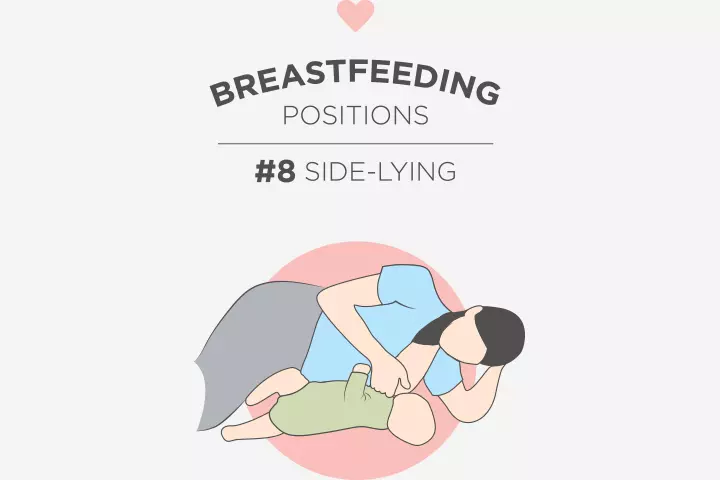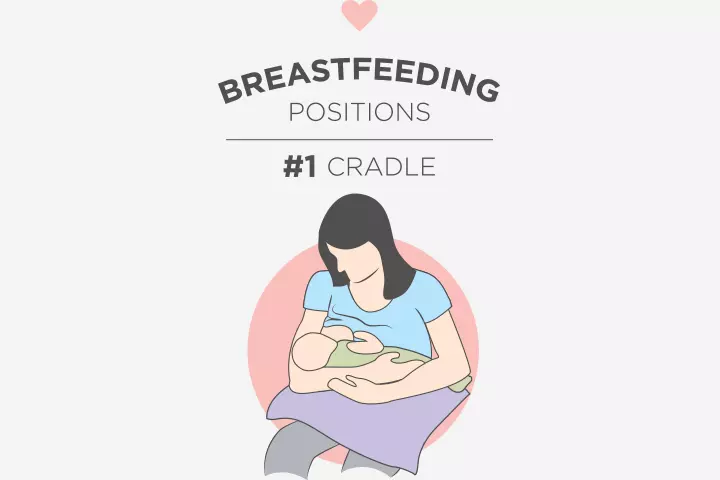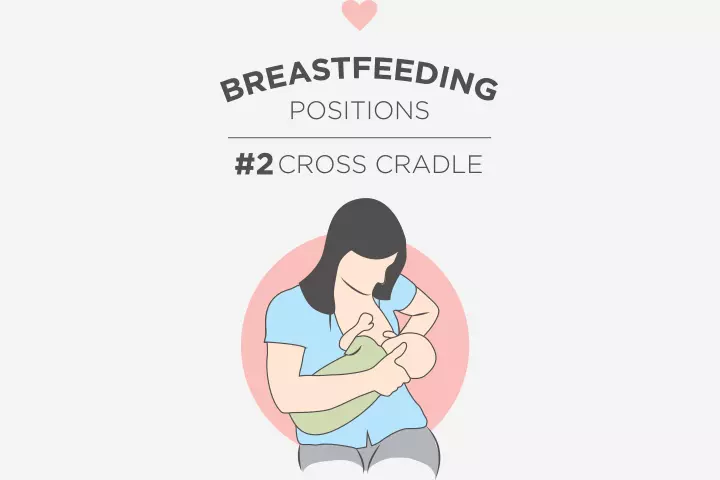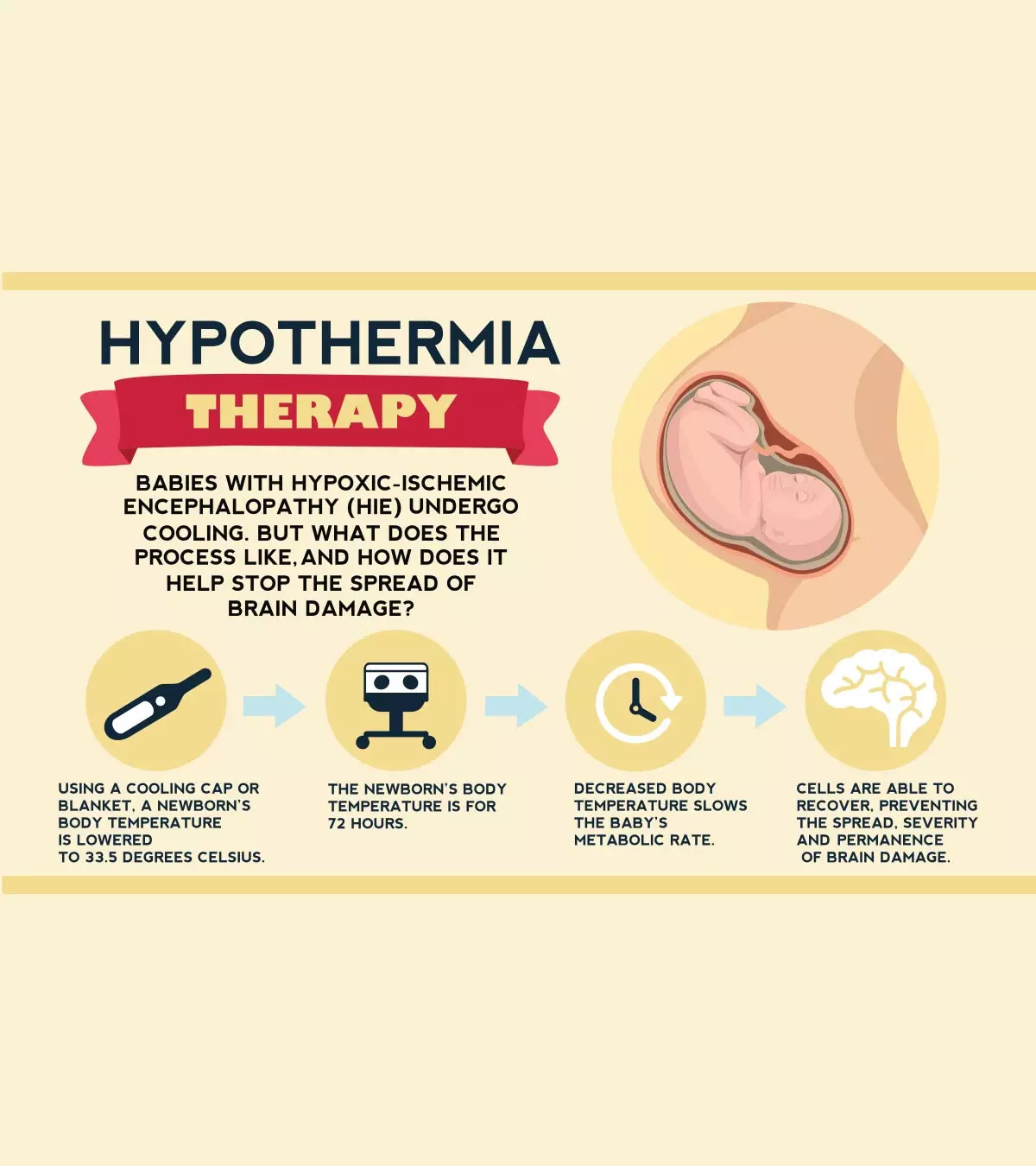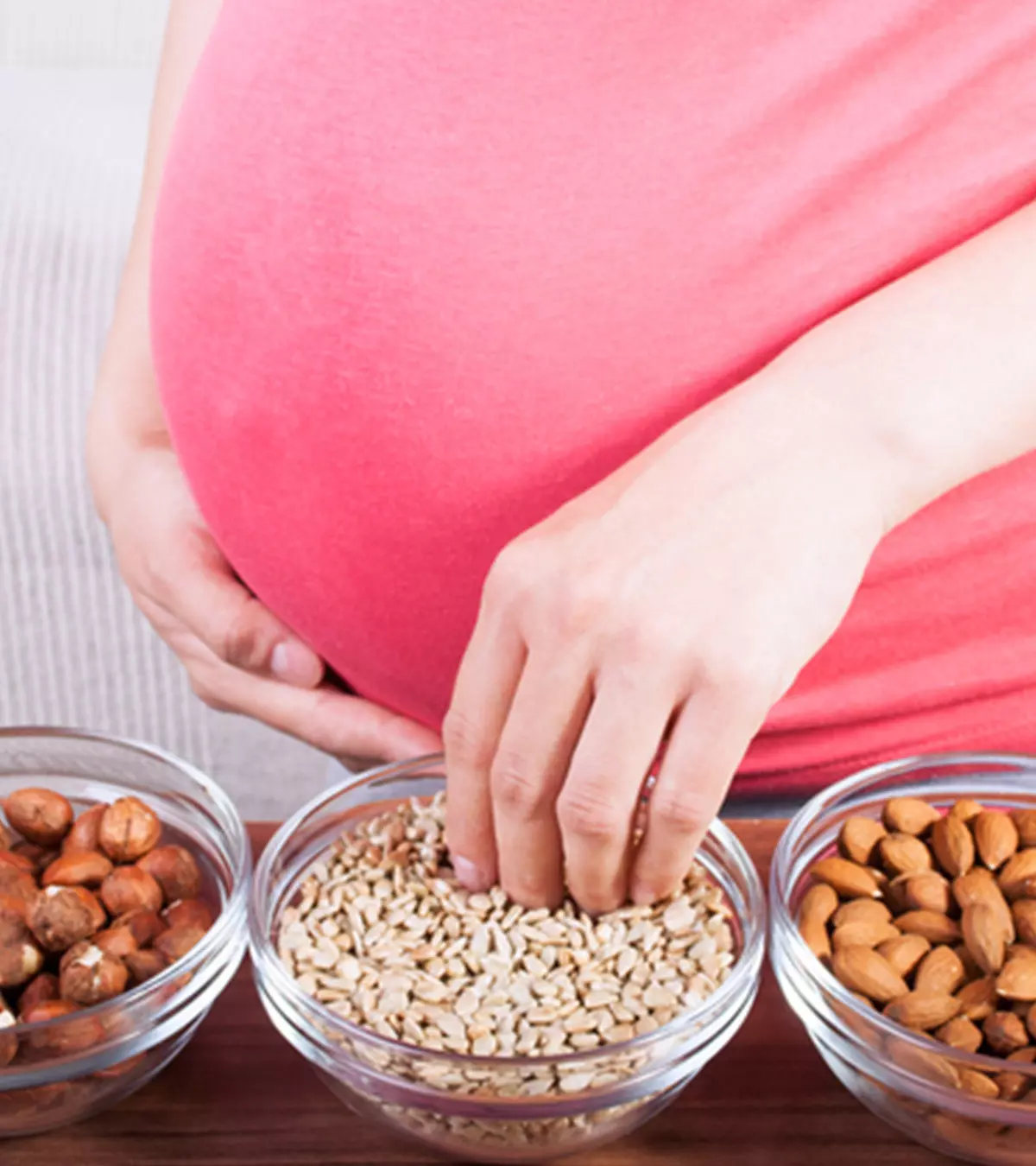

Image: Shutterstock
Cesarean birth is recommended for mothers who, for some reason, are not able to undergo vaginal delivery. However, many mothers are apprehensive about breastfeeding after C-section. They are often concerned about whether they can breastfeed their baby after birth or whether the anesthesia and medications can harm the baby.
Regardless of the mode of delivery, breastfeeding is essential to provide the required nutrition to the infant and signal the mother’s body to continue producing more milk. Read this post to know if it is safe to breastfeed the baby after a C-section and related details.
When Does Breast Milk Come In After C-Section?
The American Academy of Pediatrics (AAP) states, “Your breast milk will come in almost as readily as it would have if you had delivered vaginally.” So you will not have to wait to feed the baby (1).
Can You Breastfeed Right After A C-Section?
Yes, you can breastfeed after a C-section. Medical experts recommend that you breastfeed as soon as possible after childbirth (2).
Benefits Of Breastfeeding After C-Section
The first hour after childbirth is called the “golden hour.” Breastfeeding in the golden hour has several benefits for the mother and the infant. The mother starts producing colostrum initially, which becomes breastmilk over three to four days.
Benefits of breastfeeding in the golden hour for babies (3) (4) (5)
- Ideal nutrition for the baby as it is packed with protein, salts, fats, and vitamins
- Regulates body temperature, respiration, and heart rate.
- Improves immunity
- Helps establish a healthy gut by coating the inner lining
- Helps the baby pass meconium and reduces their chances of developing jaundice
- Balances blood sugar levels and reduces the risk of developing diabetes
- Reduces the risk of asthma, ear infections, and Sudden Infant Death Syndrome (SIDS)
- Lowers the risk of childhood obesity and leukemia
- Provides the necessary nutrients to boost the growth and development of the brain, eyes, and heart
Benefits of breastfeeding in the golden hour for mother
(6)
- Satisfaction of providing your baby with the best nutrition
- Helps the uterus contract and stop bleeding
- Reduces the chances of postpartum hemorrhage
- Skin-to-skin contact and the baby suckling at the breast helps boosts milk production (7)
- Improves the bond between the mother and the baby
For preterm infants, breastfeeding has several positive effects on the infant’s overall health. Breastfeed your preemie immediately after C-section birth to ensure healthy growth (8). If your baby has to be admitted to NICU or needs to be away from you for medical reasons, start pumping immediately or as soon as possible.
What Are The Concerns Over Breastfeeding After C-Section?
You may have heard of some complications arising from a C-section operation. However, most have less severe effects on breastfeeding:
1. Influence of anesthesia
The first concern most mothers have while still in the operation room is the probable effect of anesthesia on the infant. Can the anesthesia pass into the baby through breastmilk? The answer is no.
Doctors know that breastfeeding right after birth is essential and thus only administer local/ epidural anesthesia. This numbs your lower body, whereas the torso has normal sensitivity. It ensures no effect on the upper body parts, including breasts.
Researchers state that epidural anesthesia has no adverse impact on the infant’s health or breastfeeding (9)
2. Use of pain medication
Since you are under anesthesia, you will not feel the pain. However, as its effect tapers off, you will feel pain around the site of operation. Pain impulses can interfere with the secretion of oxytocin, the hormone essential for the flow of breastmilk.
Doctors provide an intravenous (IV) drip of pain medicines during surgery to prevent the onset of pain. These drugs are morphine-based and can provide pain relief as long as 18 hours after surgery. The pain medication does not pass into breastmilk readily and whatever gets transferred has a negligible impact on the infant.
The baby may feel slightly tired, but there is no long-term influence on healthy growth. Colostrum absorbs the least amount of pain medicine. Therefore, it is undoubtedly safe to breastfeed the baby immediately after C-section, even if you are administered pain medication (1).
Opioid-based medicines
The mother could be later prescribed oral painkiller compounds such as oxycodone (sold as Percocet) and hydrocodone (sold as Vicodin), which are opioid-based medicines or narcotics. These compounds readily pass into the breastmilk, but doctors only administer a concentration safe for the infant.
The medication is usually prescribed for three days (72 hours), in which the quantity of milk consumed by the infant is not sufficient to cause excessive oxycodone exposure (10)
Researchers note that the benefits of such painkillers outweigh the risks as less pain equals more oxytocin, which aids better suckling for the infant ( 11)
But, discuss with the doctor about non-opioid-based painkillers. You can always use acetaminophen (paracetamol) for pain within prescribed limits since the drug is compatible with breastfeeding (12)
3. Effect of antibiotics
You are administered intravenous antibiotics right after delivery to prevent infection in the surgical wound. However, as antibiotics pass into the breastmilk, only safe antibiotics are given to you. Antibiotics may cause mild side effects, which are temporary, and usually, the effects are assessed by the doctor in the post-delivery routine checkups.
The doctor might tell you to take the antibiotic after breastfeeding the baby, so there is a long gap between two breastfeeding sessions. This gives ample time for the body to process the medicine, resulting in minimal exposure to the newborn (13)
Antibiotics may seem unnecessary, but experts suggest that these medicines reduce the chances of infection in postpartum mothers. Overweight and obese mothers have a higher risk of infection after delivery. Antibiotics significantly mitigate the chances of infection in such cases (14)
4. Post-delivery medical needs
Some babies, especially those born preterm, may have to be admitted to the neonatal intensive care unit (NICU). In some other cases, mothers may be experiencing post-delivery health complications making it difficult for the babies to be breastfed.
However, if the mother can pump breastmilk for the baby, it should be the first choice. It will help signal your body to prepare enough breastmilk for your baby. Once you and your baby are reunited, you can work on latching and direct breastfeeding.
5. Delayed milk production
Studies have shown that it might lead to delayed milk production in some cases, especially for women who go for elective cesarean section (15). Your lactation consultant or gynecologist can help you initiate and boost your milk supply.
6. Emotions
Transition to parenthood can be an amalgamation of excitement, changing marital relations, pain from childbirth and labor, and a rollercoaster of hormonal changes. It is characterized by increased irritability, difficulty focusing, extreme mood swings, fatigue, difficulty sleeping, or insomnia. The fatigue and stress may result in “baby blues.”
Mothers dealing with baby blues may experience difficulties understanding their baby’s cues, and the stress may also impact their breastmilk supply. Latching problems, baby positioning, tongue ties, or other health issues with the baby or the mother may add to the frustration. Some mothers who find it difficult to cope with these emotions may decide to stop breastfeeding (16).
7. A sleepy baby
The painkillers can make the baby sleepy and cause them to lose the enthusiasm to wake up and breastfeed. You can try things such as touching them, talking to them, removing their blanket, changing their diapers, wiping their face with a wet washcloth, or stroking their cheek or bottom of their feet to wake them up.
What Are The Best Breastfeeding Positions After A C-Section?
You can choose from the following breastfeeding positions, which will not affect the postpartum recovery:
1. Pillow-supported lap hold
Image: Shutterstock
Sit on a bed and place a soft pillow on your lap. Place the infant on the pillow, stomach to the stomach to you, so that his mouth can reach the nipple. Support the baby with your hands and use the pillow for support. You can consider buying a specialized C-section breastfeeding pillow that gives you better hold on the baby while breastfeeding.
2. Lying on the side
Image: Shutterstock
Lie on the side and nurse the newborn by placing them beside you. You can place the baby on a soft pillow if you feel they cannot reach the breast. Wrap an arm around the baby over their head to provide support. You can use pillows under your head, behind your back, and between your knees to provide more support and comfort.
3. Reclined feeding
Image: Shutterstock
You can feed in a reclined position on a chair if your back feels sore. Place small pillows to support your lower back. Alternatively, you can purchase a cushioned chair. Recline in the chair with the baby and breastfeed the usual way.
4. Football hold
Image: Shutterstock
It is also called a clutch hold. Sit on a bed with your feet folded or extended. Place a pillow to your left or right side, whichever is comfortable. Gently place the baby on their back, on the pillow, with the feet pointing backward and head towards you. Adjust the baby so that their head goes under your arm and their mouth reaches straight to your breast. You will get to hold the newborn like a football or a clutch by your side. This hold can be particularly convenient when breastfeeding twins after a C-section as it removes the strain of holding the infant entirely in your arms.
5. Cradle hold
Image: Shutterstock
This is the traditional breastfeeding position. You can support the baby on the arm on the same side of the breast. The baby’s head rests in the crook of your elbow, your forearm supports the baby’s back, and the palm is used to cup the baby’s buttocks or upper thighs. You can use the other hand to support your breast or hold your nipple.
6. Cross-cradle hold
Image: Shutterstock
You can engage the baby’s bottom in the crook of your elbow on the opposite arm of the feeding breast. The forearm supports the baby’s back, and the head is supported by your thumb and forefinger, right behind the ears. You can use the other hand to hold or support the breast. The baby will be in a tummy-to-tummy position with the mother.
7. Reverse crawl
Image: Shutterstock
You can lie down and relax as the baby lies across your shoulder. This position is especially useful for mothers who had C-sections. You would need somebody’s help to place your baby in the position. This position is valid even in the operation theatre, immediately after childbirth.
Baby’s Weight Loss After A C-Section And Supplementation
Extra fluids are administered intravenously to the mother undergoing a C-section. These fluids pass through the placenta and the baby is usually born with more water weight. They lose this weight as they pee.
The doctors will monitor the baby’s weight 24 hours after birth before suggesting the use of supplementing the baby’s nutrition with formula (17).
Tips For Breastfeeding After A Cesarean Section
The following tips can help you have a long and successful breastfeeding journey after a c-section.
- Start breastfeeding as soon as possible after your c-section
Mothers who have received spinal or epidural anesthesia can go for breastfeeding immediately after birth. If you cannot breastfeed the baby directly, you can consider holding your baby skin-to-skin. Skin-to-skin and frequent attempts to breastfeed may promote breastmilk production (18).
- Get help positioning your baby
You will need help from a loved one or a nurse to position the baby, especially in the first 24 hours. It is because of the limited movement with an incision on the abdomen, an IV line, and a blood pressure cuff.
- Breastfeed frequently
Frequent breastfeeding (every one to three hours) is recommended for the first few weeks of the newborn’s life. It will enable breastmilk production and give your baby practice sucking and swallowing (19).
- Keep your baby with you as much as possible
Being around our baby or indulging in frequent skin-to-skin contact causes a release in oxytocin, also called the “love hormone.” In turn, it will enable breastmilk production (20).
- Use a breast pump
Pumping once every two to three hours will help boost and maintain your milk supply.
- Take your pain medication
If your pain is under control, you will be relaxed and be able to breastfeed well. The doctor will prescribe the necessary dose of painkillers if the benefits outweigh the risks.
- Take advantage of the extra time in the hospital
You will have access to your lactation counselor and nurses during your hospital stay. Clear all your doubts so you can be comfortable and confident when you return home with your baby.
Frequently Asked Questions
1. Can breastfeeding after C-section affect my periods?
Breastfeeding affects periods, irrespective of your mode of delivery. Regular breastfeeding stimulates the secretion of a hormone called prolactin that inhibits ovulation – release of an egg by the ovary. Since no egg is released, there is no implantation and hence no menstrual periods. Non-breastfeeding mothers or those who feed infrequently return to their pre-pregnancy menstrual cycle in around 15 weeks. Breastfeeding mothers experience a prolonged absence of periods and can have their first period as late as 40 weeks after delivery (21)
2. Can I breastfeed if I had C-section under general anesthesia?
Yes, you can breastfeed. General anesthesia should not affect breastfeeding as you can safely nurse once you are awake and alert enough to hold your baby. For this reason, medical experts use and recommend only local anesthesia that transfers in fewer quantities into breastmilk than general anesthesia (22).
3. What if I get diarrhea after C-section and when still breastfeeding?
Diarrhea can be a result of several reasons. You must see a doctor to treat the underlying condition quickly. The doctor can prescribe you antibiotics safe for use during lactation. Probiotic treatment can also be an option since it is considered safe when breastfeeding (23)
4. What to do if there is no breast milk after C-section?
Milk supply mainly depends on demand and supply. The most effective way to have enough milk supply is to feed the baby frequently or pump your milk (24). Ensure ample hydration, eat a balanced diet, and rest as much as possible to promote healthy milk production. Your lactation consultant and nutritionist can help establish a healthy breast milk supply.
Breastfeeding is considered to be the best source of nutrition for a newborn. Unless it is stated explicitly by your doctor due to specific reasons, do not refrain from breastfeeding your baby. Breastfeeding after a C-section is entirely safe as the skin-to-skin contact helps calm the baby and improves milk production. You could also choose from the list of breastfeeding positions so that the process does not interfere with the postpartum recovery and the healing of the stitches.
Key Pointers
- Breastfeeding immediately following childbirth has several benefits for the baby and the mother.
- Cradle hold, football hold, cross-cradle hold, and reverse crawl are some recommended nursing positions after a C-section.
- Most pain medicines, antibiotics, and anesthesia used during a C-section are not a contraindication for breastfeeding after childbirth.
- Mother’s milk is also beneficial for a premature infant.
References
- Breastfeeding After Cesarean Delivery.
https://www.healthychildren.org/English/ages-stages/baby/breastfeeding/pages/Breastfeeding-After-Cesarean-Delivery.aspx - Breastfeeding After a C-Section.
https://www.mottchildren.org/health-library/hw130433 - Golden Hour is Most Important for New Mothers Trying to Breastfeed.
https://www.prowersmedical.com/golden-hour-is-most-important-for-new-mothers-trying-to-breastfeed/ - Colostrum.
https://my.clevelandclinic.org/health/body/22434-colostrum - Colostrum – The Superfood For Your Newborn.
https://americanpregnancy.org/healthy-pregnancy/breastfeeding/colostrum-is-superfood-for-your-newborn/ - The ‘golden hour’: Giving your newborn the best start.
https://news.sanfordhealth.org/womens/pregnancy/the-golden-hour-giving-your-newborn-the-best-start/ - Amy J. Hobbs, et al.; (2016); The impact of caesarean section on breastfeeding initiation, duration and difficulties in the first four months postpartum.
https://www.ncbi.nlm.nih.gov/pmc/articles/PMC4847344/ - Katherine E. Gregory, et al.; (2016); Influence of maternal breast milk ingestion on acquisition of the intestinal microbiome in preterm infants.
https://microbiomejournal.biomedcentral.com/articles/10.1186/s40168-016-0214-x - Mert Akbas and A Baris Akcan; (2011); Epidural Analgesia and Lactation.
https://www.ncbi.nlm.nih.gov/pmc/articles/PMC4261367/ - Suzette Seaton et al.; (2007); Oxycodone as a component of multimodal analgesia for lactating mothers after Caesarean section: relationships between maternal plasma, breast milk and neonatal plasma levels.
https://pubmed.ncbi.nlm.nih.gov/17550483/ - Beth D. Darnall and Michael E. Schatman; (2015); Opioid Use and Lactation: Protecting the Child in the Context of Maternal Pain Care.
https://www.ncbi.nlm.nih.gov/pmc/articles/PMC4806641/ - Pain Control After a Cesarean Birth.
https://healthonline.washington.edu/sites/default/files/record_pdfs/BB2-pp31-34-Pain-Control-After-Cesarean-Birth.pdf - J L Mathew; (2004); Effect of maternal antibiotics on breast feeding infants.
https://www.ncbi.nlm.nih.gov/pmc/articles/PMC1742963/pdf/v080p00196.pdf - Oral antibiotics after C-section may reduce infection risk for obese women.
https://news.ohsu.edu/2017/09/20/oral-antibiotics-after-c-section-may-reduce-infection-risk-for-obese-women - Yuksel İsik, et al.; (2016); Early postpartum lactation effects of cesarean and vaginal birth.
https://pubmed.ncbi.nlm.nih.gov/27418219/ - Baby Blues, Postnatal Mental Health and Breastfeeding.
https://breastfeedingusa.org/content/article/baby-blues-postnatal-mental-health-and-breastfeeding - Xiaomeng Deng and Margaret McLaren; (2018); Using 24-Hour Weight as Reference for Weight Loss Calculation Reduces Supplementation and Promotes Exclusive Breastfeeding in Infants Born by Cesarean Section.
https://pubmed.ncbi.nlm.nih.gov/29356561/ - How to increase milk supply.
https://raisingchildren.net.au/newborns/breastfeeding-bottle-feeding/breastfeeding-challenges/increase-supply - How Much and How Often to Breastfeed.
https://www.cdc.gov/nutrition/infantandtoddlernutrition/breastfeeding/how-much-and-how-often.html - Psychologists say there are five types of love languages, but to newborn babies, only one really registers: physical touch.
https://www.stanfordchildrens.org/en/health-topics/magazine/give-em-some-skin - S Chao; (1987); The effect of lactation on ovulation and fertility.
https://pubmed.ncbi.nlm.nih.gov/3549114/ - Leyla Kutlucan, et al.; (2014); Effects of different anesthesia protocols on lactation in the postpartum period.
https://www.ncbi.nlm.nih.gov/pmc/articles/PMC4285212/ - Jackie Elias; et al.; (2011); Are probiotics safe for use during pregnancy and lactation?
https://www.ncbi.nlm.nih.gov/pmc/articles/PMC3056676/ - Breastfeeding and Delayed Milk Production.
https://www.stanfordchildrens.org/en/topic/default?id=breastfeeding-and-delayed-milk-production-90-P02655
Community Experiences
Join the conversation and become a part of our nurturing community! Share your stories, experiences, and insights to connect with fellow parents.
Read full bio of Briana Violand
Read full bio of Dr. Ritika Shah




